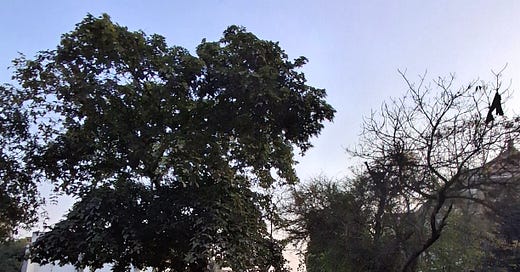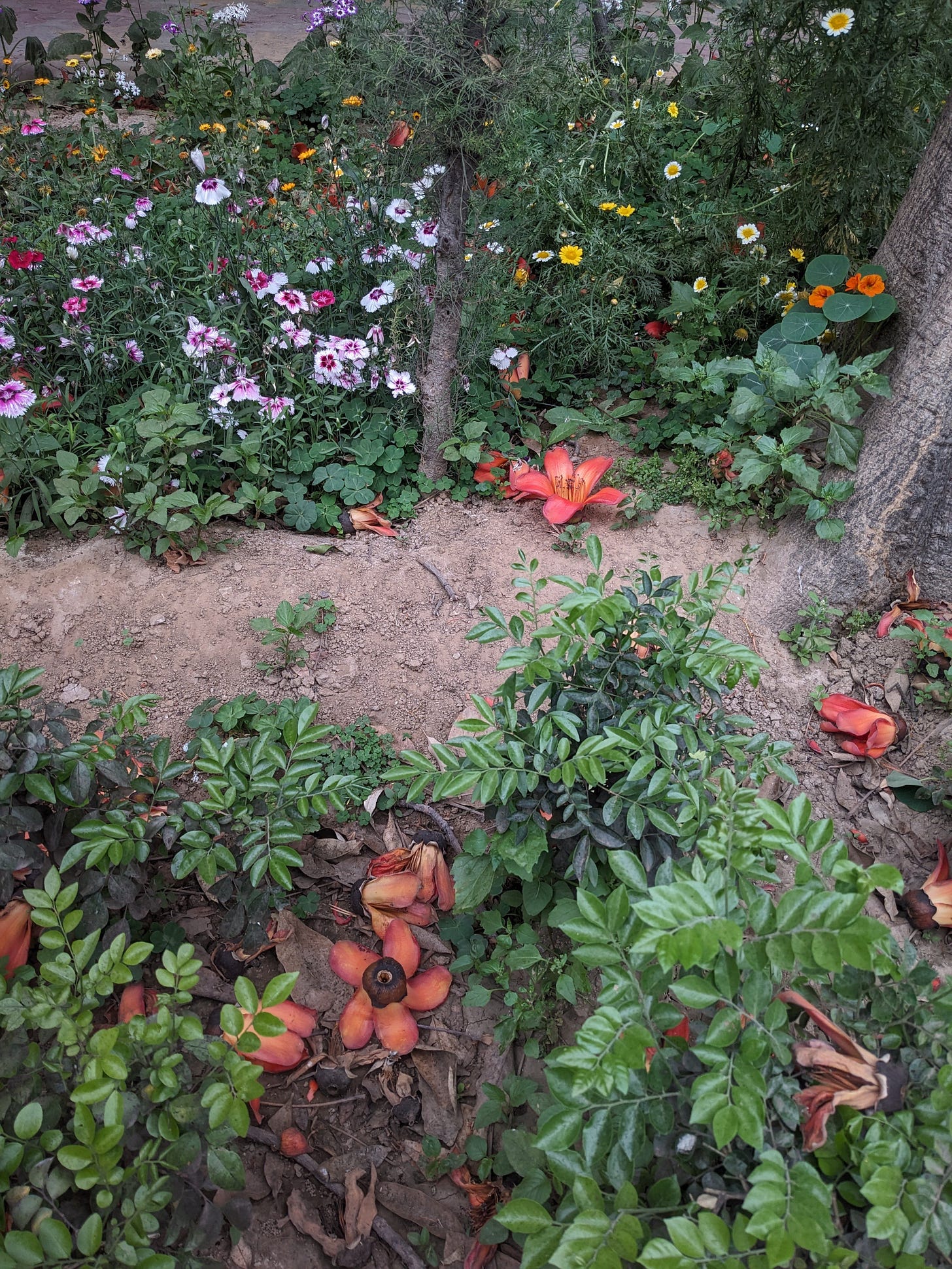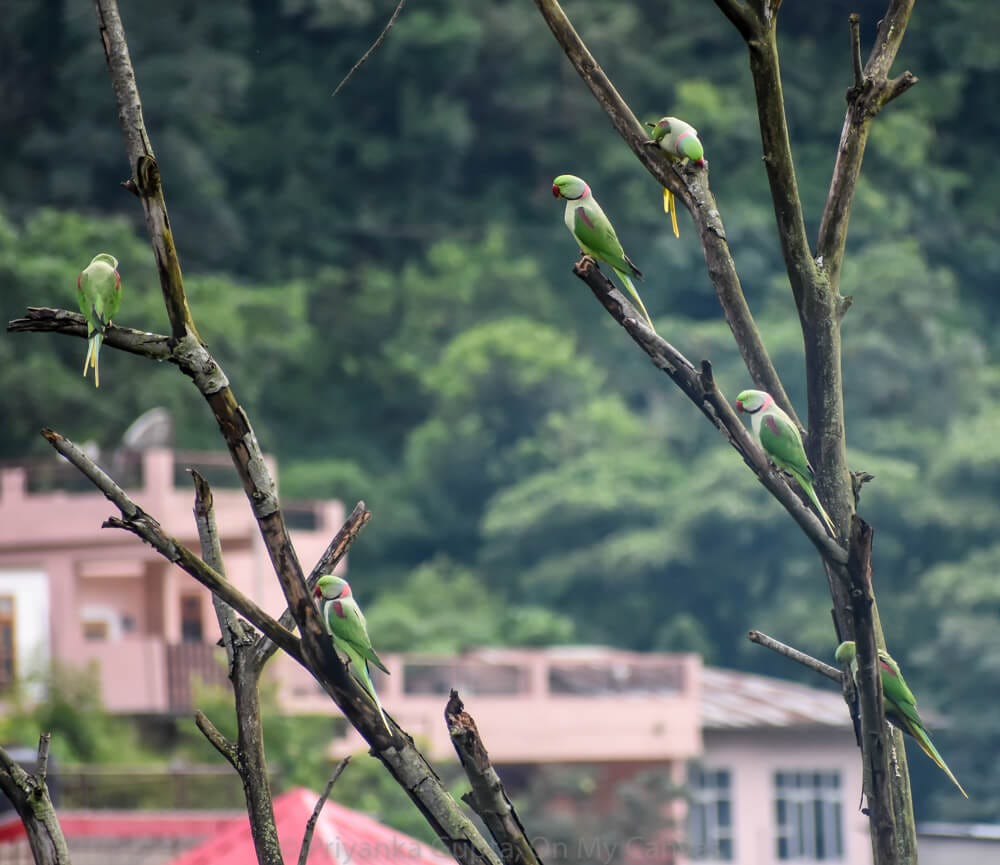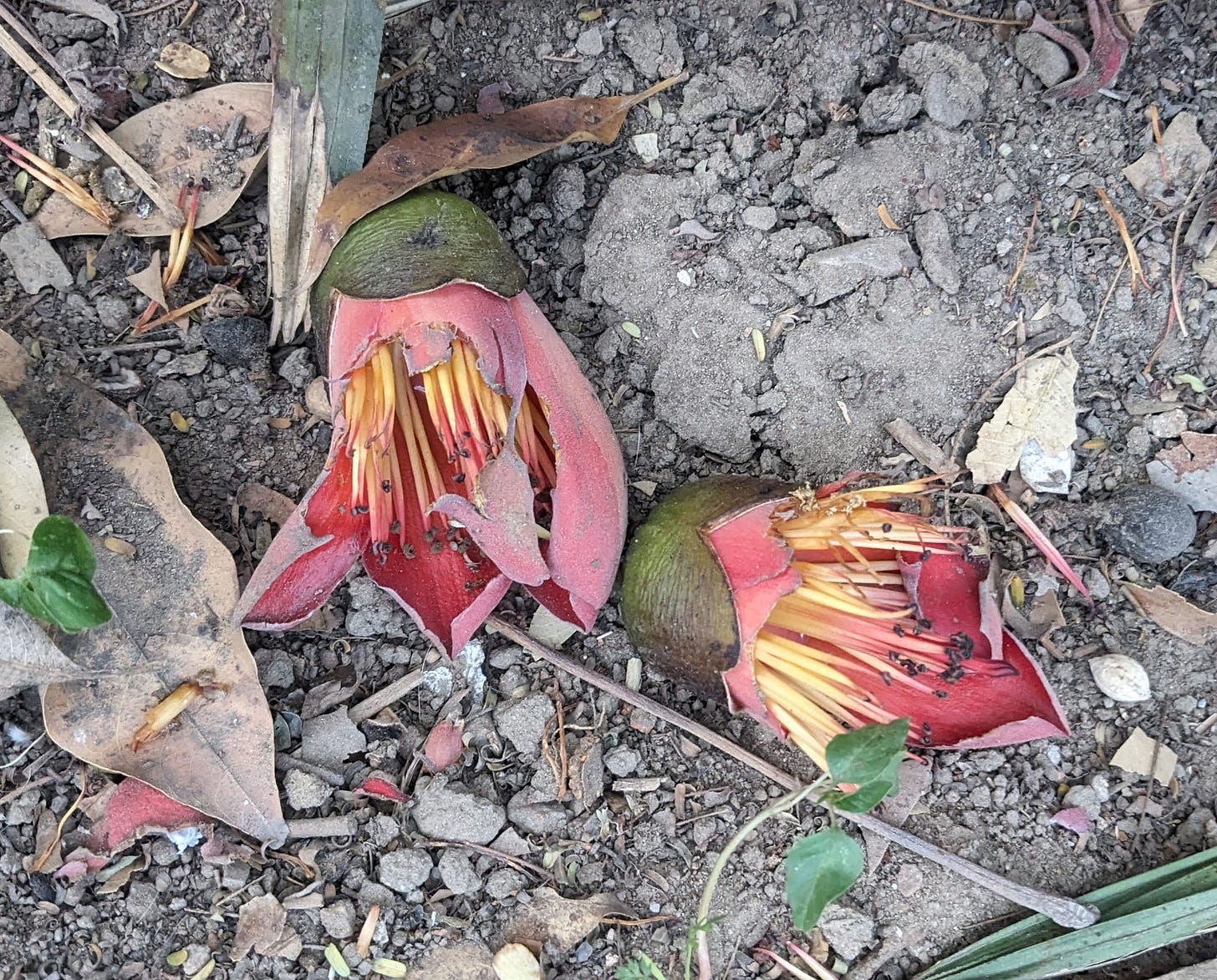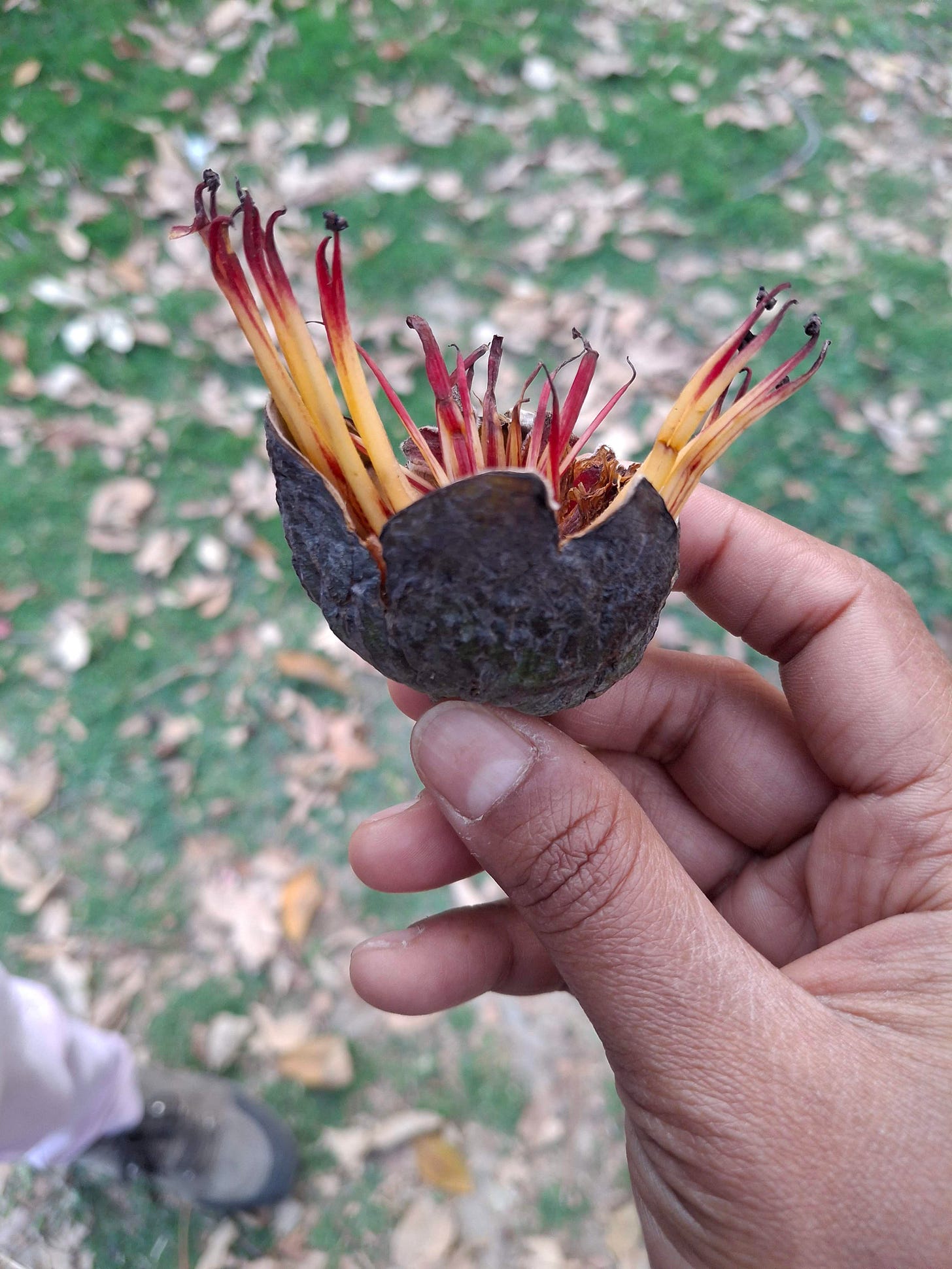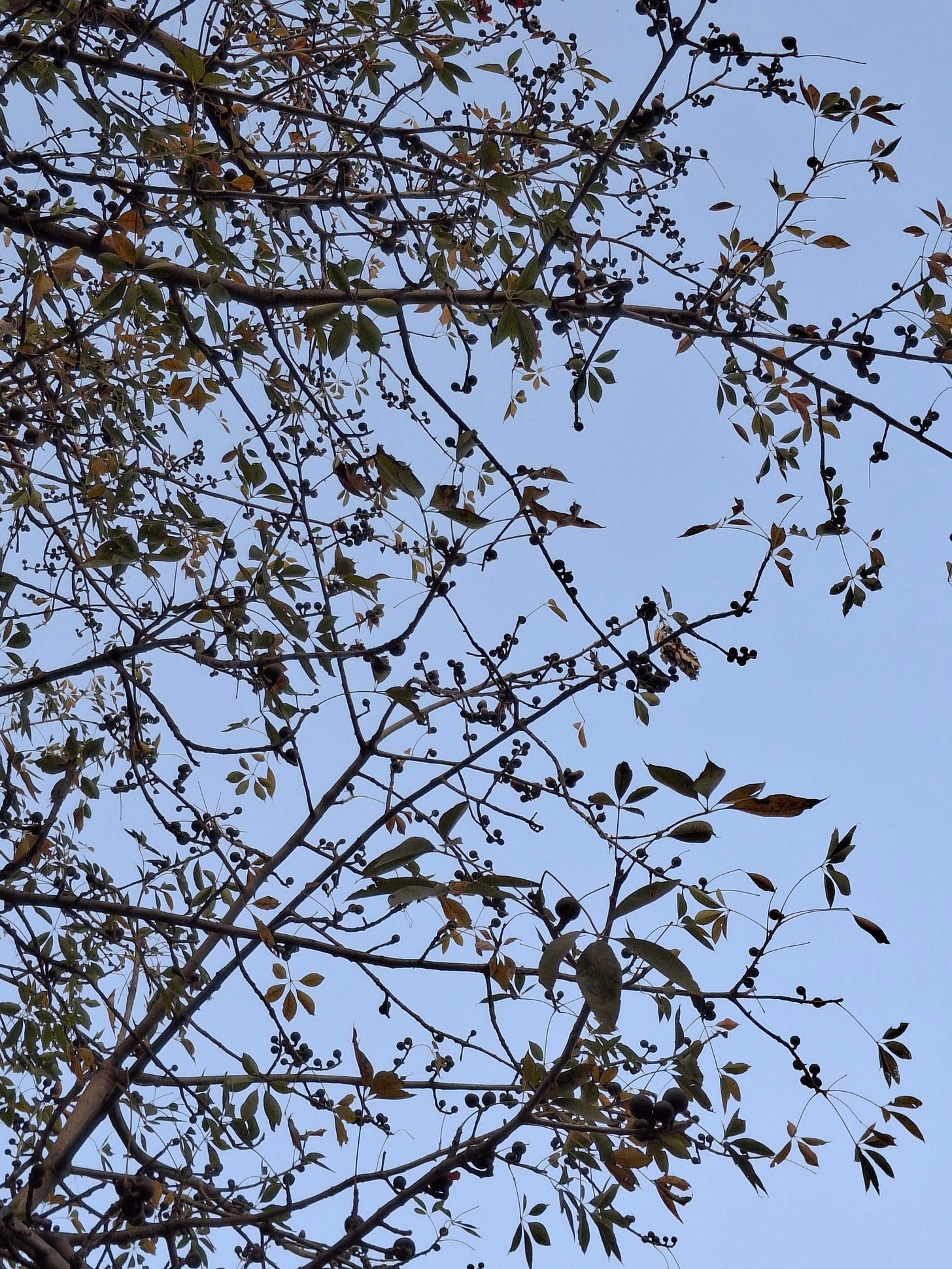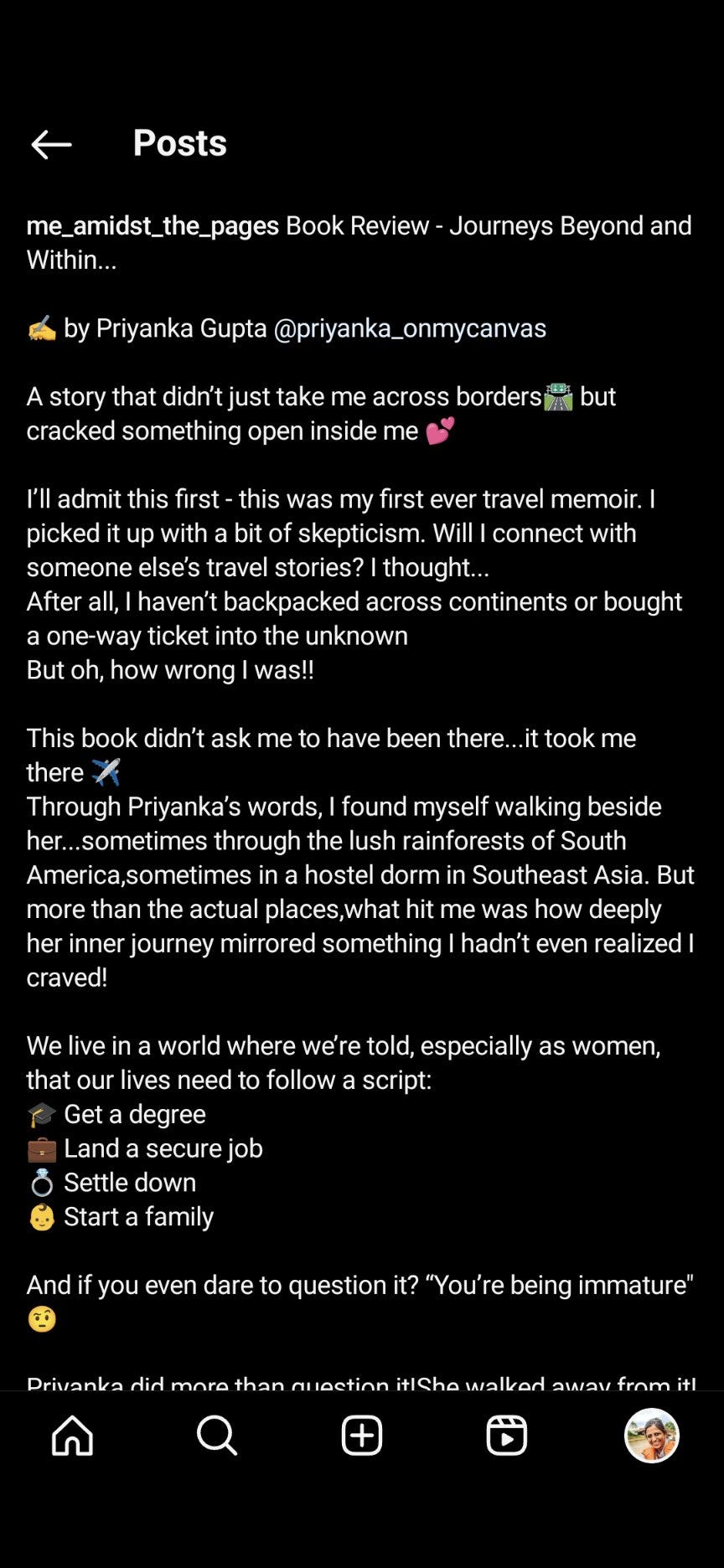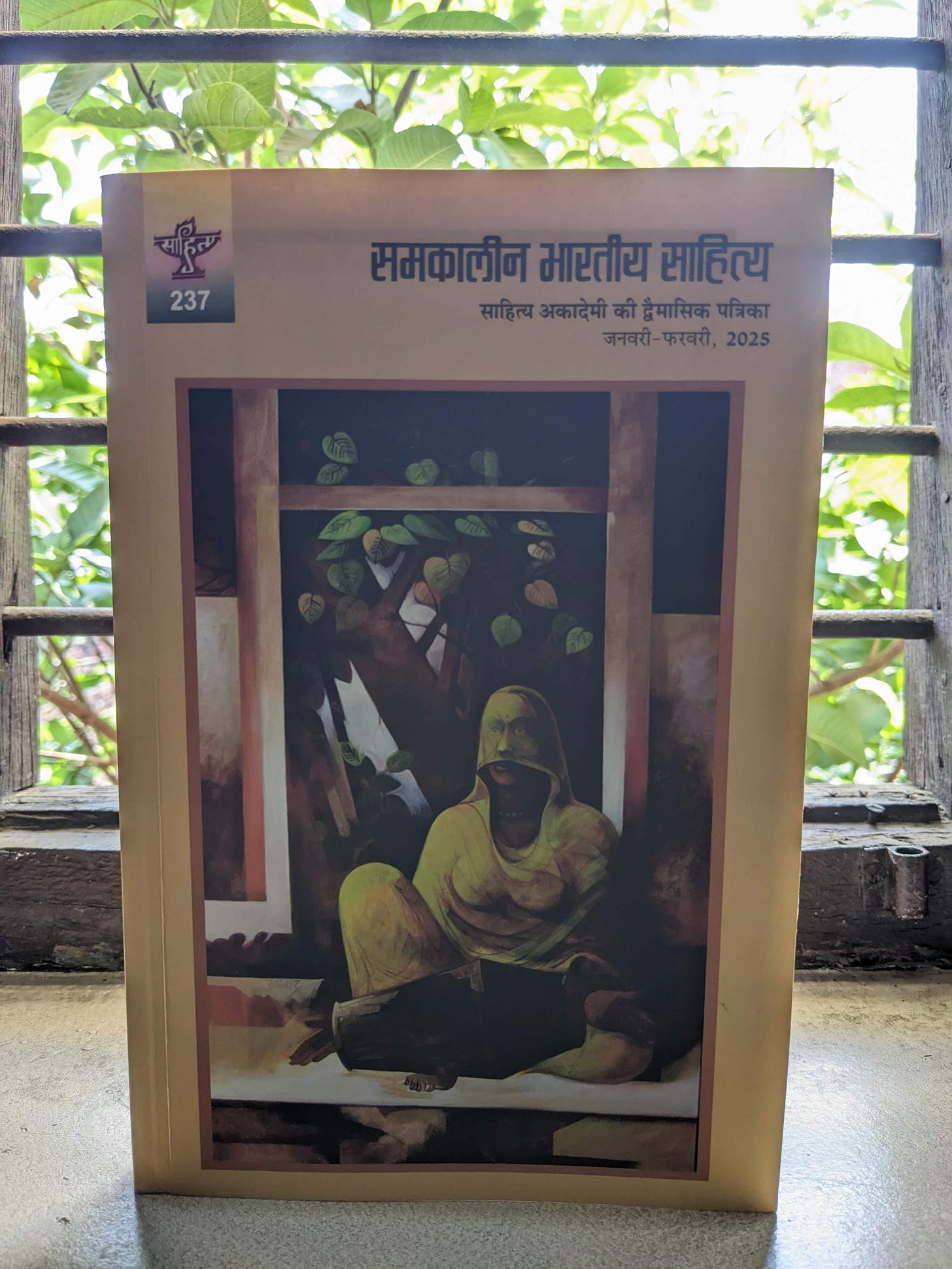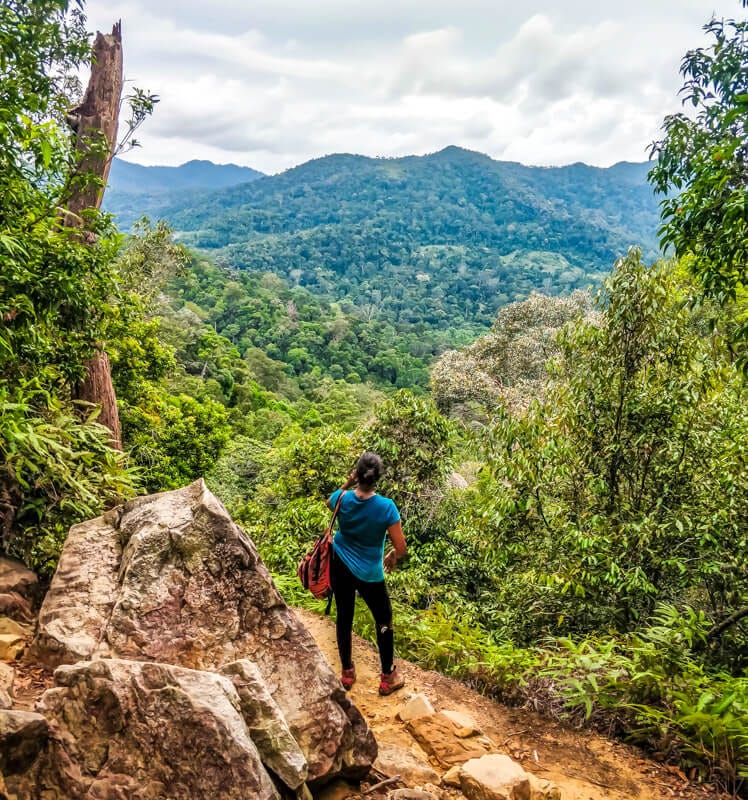our wild wide world
the semal tree and home, the many things to read, the fascinating wild, news to follow, book reviews, fight for your dreams, and colorful pictures
Dear Reader,
Thank you for being here.
Some housekeeping… This email may end up in the Promotions tab of your inbox, or worse, spam. Please move the email to your Primary inbox. Looking Inwards letter will be there from then on.
Today I’m directly starting with what I’m reading because the narrative I wanted to write is intertwined with one of the reads, like a vine with its flowers.
What I’ve Been Reading
1. When it Comes to Healing, Copy the Trees by Neha Sinha (a writer I’ve just discovered) — She speaks of birds and trees with such love that it seems impossible not to like her and her writing. This piece is pure admiration for the semal tree, which fascinated me for the first time in Delhi, when I recently returned to the city as a tree lover and saw semal everywhere. That it was the blooming month of February and March definitely helped. (The article is on Mint Premium Lounge so you do need a subscription. Or the lovely Neha has put it on her Instagram too. I can’t find the link to the post. My apologies.)
It’s extremely surprising, and a bit disappointing, that for all those years I was in Delhi, I never recognized the semal, or the red silk cotton tree that grows in dry deciduous or moist climates. I studied in the Indian Institute of Technology Delhi for four years and my campus has tens of old semal trees: I discovered on a recent visit to my alma mater. I had never noticed any during my undergrad. After graduation, I worked in Delhi for a year and a quarter but didn’t find any semal. Perhaps I never looked up to see trees. I was looking down or further ahead, drowning in my own misery.
What was the misery? I didn’t like my life at the moment, so I didn’t pay attention to the life around me. I would take an auto or cab to office and went back from work at seven or eight pm, too late to notice anything. Anyway, Delhi streets aren’t safe for lone women at night. Not that I had a lot of time to walk around. Saturdays were working. How much can you do on Sunday? Though I could go to all these brilliant and beautiful places — Lodhi Garden, Humayun’s tomb, the Old Sunday Book Bazaar — I would sit in my house, a floor in an independent building in a congested neighborhood, and watch episodes of one or the other previously watched series. I didn’t want to explore even a new sitcom, that was how drained I was.
I visited Delhi multiple times after but always stayed at a friend’s house in Noida, another city adjacent to Delhi. So I was at least 30 km far from our capital. Not that Noida wouldn’t have its semal, but I didn’t see.
Only since a few years, after I had been a traveler in other countries, that I have started to notice my own country too.
I talk about “rediscovery of home” in my recently-released travel memoir Journeys Beyond and Within…. Those of you who are reading it, or have read it, know.
This small excerpt from the memoir fits perfectly in this newsletter right now. The year is 2017. I’ve just returned to India from a nine-month travel to South America and have taken up a room in a shared flat in Bangalore city in Karnataka. And then,
The warm, yellow sun barging in through my balcony into the room invited me on a walk. The Southern Chilean winter was long, rainy, and sunless. Sunlight was now a tangible thing I liked, not something I wanted to avoid. As I walked down the noisy, potholed streets and roads, I skirted around the bulls and cows and their stinky dung. Strangely, I didn’t grimace like I did in the past. I smiled. Sprawled on the streets, the animals gazed into the distance, as if contemplating India’s financial budget. Soaked in sweat, I took their pictures like foreign backpackers in India do. The shopkeepers and walkers watched me. I wasn’t copying the travellers. Those zen animals intrigued me though I grew up next to them.
Why?
I had never paused to look. Who looked around? What was there to see? I had so much to do.
In my corporate years, I woke up, got ready, and rushed to the office through the blaring traffic. I ate, worked, and attended meetings. At nine, I strolled back home. Putting on music, I made tea and cooked dinner. After midnight, I went to bed, cursing myself for sleeping late again. The sadness – How do I get free from this depressing work? – gave me nightmares.
Pursuing writing, I was happy. I wanted to learn from people and places and write about them. The journey outside India had refreshed me. It shook me out of inertia and boredom. Surprised by the new world, I noticed it. I didn’t go around judging. I didn’t shrug my shoulders. “What’s here to see?” I was excited and curious. From a paved street to a woolly animal, everything intrigued me.
On my travels, I appreciated my surroundings and looked at everything questioningly. I knew I wouldn’t be there forever.
Did I bring that searching eye and stimulated mind home with me?
I had never stopped to see cows. They were merged with the background, all of it one whole, monochrome piece. Now I couldn’t move on.
The book is available on Amazon worldwide and also in bookstores in India. Please search for the title on your local Amazon, or visit my blog homepage which has worldwide Amazon links to the book.
So now when I found myself in Delhi in February, March, and April, all I was looking at was this fiery red trees, their flowers fallen down. In Red fort with my partner, I picked up one and realized the flower is growing out of a vegetable my family calls simbol, the vegetable I love and that my mother makes with mango pickle. I was exhilarated, cheery, over the tree tops, so excited to finally discover the source of this delicious vegetable that reminds me of home. You can give me semal, or simbol vegetable in Antarctica, and I’d be at home.

Then fortunately my mother visited me in March beginning. My professor had asked me to give a talk about my journey and the book in my alma mater IIT Delhi. It happened that my parents were flying to Delhi from Pune to head back to their home in UP (120 kms from Delhi). They were coming from my siblings’ homes (in Pune). And when I told my father about the talk, they wanted to join it. I had invited my parents to spend a couple of days with me in Delhi, so I could show them around a city they lived next to but didn’t see. My mom agreed. She was excited. My father, as always, wanted to go straight home but he listened to my mother who must have insisted a hundred times in ways he could understand. Like she did last time when I insisted them to visit me in Kerala, about which I have written here.
Perhaps it was the excitement bubbling within me that couldn’t stop me from sending semal pictures to her. Of the tree and of the flower. Over the phone, she told me, “Oh yes, I’ve seen the pictures. Delhi has simbol?” And when we picked them up from the airport and drove to our hotel close to my alma mater, she, with her neck craned upwards, was admiring these trees. “There are so many flowers. It is full of them. So red. Wow!” Then she was noticing semal on all the rides everywhere. The next three days we visited many places around Delhi, and she was always looking up.
After all our fascination is common. In fact, I should say my fascination with trees, birds, plants, leaves, insects, animals have come from her. She looks at the natural life around her with a wonder and curiosity I have seldom seen.

One afternoon in Hauz Khas village in Delhi, where we went to show them around, in the parking outside the market, stood a semal tree. We parked our car, and I asked my mother to come inside the parking. We had dropped my parents outside so they didn’t have to walk the extra steps to the market. She happily came in. Then she bent down, and picked up the flower. Admired it, turned it around, exclaimed a few times. She looked up, her neck strained with the effort.
Trees always need you to look up to them. Perhaps they want us to dream bigger, to always reach for the sky.
Parrots and crows crowded the tree tops. I haven’t seen any plum-headed parakeets in Delhi, as Neha Sinha often does. I’ve definitely seen them somewhere, and for sure, in the town of Mandi (Himachal), I saw Alexandrine parakeets, the one with red stripes on their wings. I have written about the parrots in my life in an exclusive article on my blog. (The ones on cuckoos and other birds are in drafts.)
Mom said, “Look how many crows are eating this semal flower.” Some good semal buds, half-open, the red petals out, but still not completely open, were also on the ground. Dusty they were though. And seeing this the simple hungry human woke up in my mother, like it always does in me when I see fallen fruits that no one is picking up. Like when I saw mulberries dusty and withering on the IIT Delhi’s ground everywhere. I don’t have a photo.
My mother said, “These are big ones. See, they are just lying here! Should we pick up some?” We would have if there were enough big semal flowers. But most only fall when they have entirely blossomed, the green outside, our vegetable, shriveling away by the time.
So there is nothing left to cook. Also they leave for home in three days and until then where will we keep these flowers? And back at home whom would she cook for? I wouldn’t be there, and my parents only eat a few pieces each of the vegetable preparation. But I leave with them and rest at home for a few days before getting back into the maddening life of Delhi (only temporarily).
My father finds semal in the vegetable bazaar, and my mother cooks it the way she does with mango pickle. Of course I rejoice.
Just an interesting find: Sunder Nursery: Did you know there is a vast nursery right in the heart of Delhi which in addition to being a nursery and a garden also has an amphitheater and holds cultural events, beautiful conversations, workshops, and then there is the Sunday market too. I haven’t been there but I’ll check it out when I am next in Delhi.
2. This brilliant poem: How I go to the Woods by Mary Oliver — Needless to say if you have gone to the woods with me, I must love you very much :)
3. A story of hope amid the sinking feeling by Vikram Kanwar: How a house owner wants to shift his house because it has been sinking inch by inch. Story of hope, wit, and survival.
4. Written in the Stars: A Night With The Leatherback Turtle by Radhika Raj: This story of love, life, and survival evokes a lot of beauty and wonder within me.
5. Unwelcome at Home: The Palm Civets of Kolkata by Radhika Raj: More and more of such stories should come out. We need them, not to hold onto hope, to be aware, to save these little animals, but also to know that the world needs us as much as we need it.
6. Never knew there is so much big cat-human conflict in my home state Uttar Pradesh until I read this study, Living With the Wild by the Wildlife Trust of India: This is more like a research paper on what’s a human-big cat conflict, how many conflicts have been in Uttar Pradesh (North India), what steps does the forest department takes, how villagers suffer and coordinate, what happens when a big cat is tranquilized and captured for relocation, case studies, and what are the steps forward.
Honestly, I didn’t read it in whole, but flipped through it, and only read the real stories more than the numbers and facts. I thought to share here for the wildlife lovers, travelers interested in spotting a big cat in India, organizations working for wildlife welfare and protection, and just in general for everyone to demonstrate how habitat loss is a threatening situation for the wildlife but also for us humans. This project by the Wildlife Trust of India even saved children from the jaws of the big cats so this is worth a quick read.
7. Heartbroken to read: ‘We are condemned’: Kashmiri tourism pays the price of Pahalgam killings’— I haven’t shared anything in the newsletter regarding the heinous attacks on tourists in Kashmir or the looming India-Pakistan war. These are the first-of-its-kind killings which shook the whole of India. I was busy that day in work: that some days seem like a war of its own. But when I realized the intensity of what has happened, I avoided the news. I didn’t want to accept this cruelty as the reality. I think everyone’s heart is broken. Imagine if my friend or I myself was running around in the open grassy meadow, basking in the sun, and suddenly there were gun shots. Nightmare!
I wish that this never happens again anywhere in the world. The one fact from the article that surprised me is that tourism in Kashmir constitutes for only 1-2 percent of the state GDP.
8. No Solution in Kashmir without the people of Kashmir by Vaishna Roy: This article raises some really fine questions on the situation in Kashmir.
Most importantly, did Kashmir really become “normal”? Is a mere restoration of tourism to be considered “normalcy”? When will the Centre engage with Kashmiris on a basis of equality rather than as a people to be subdued? Why has statehood not been restored even seven months after the installation of an elected Chief Minister?
9. Updates on the India Pakistan conflict:
The tensions between India and Pakistan are spelled out well here on BBC, along with expert opinions on what is happening and what might happen.
CNN is also a great space to stay updated. Events are put up as and when they occur.
Majorly I’m following the Indian journalist Faye D’Souza on her Instagram and Youtube channel.
10. As I move into the world of book reviews, this post on the subscriber-supported The Print made me chuckle: Traditional book reviews are dead. ‘Bookstagrammers’ are killing it one post at a time by Rachel John — I couldn’t agree more with the author when she says, "Literary critics have conventionally seen themselves as above the novel, author, and reader." I have also seen the ‘Bookstagrammers’: people on Instagram reviewing books thinking it’s enough to share an AI-generated review, coupled with certain pages of the book each with one sentence highlighted, a short video of opening the book packet, or two lines on the book and then those highlighted pages.
But, in my case, I have also seen readers on Instagram write 1000-word long reviews, reviews that spilled over from the writing section of the post into comments. Beautiful words and emotions that the book generated within them and those that they keep resharing on stories.
Honestly, I’ve felt amazing to directly connect with the readers, and I’m thankful for those who pick up a book and pour in their days and nights to read it and write about it. Having said that, I also wish that the other Instagrammers would be more respectful of a book, a writer, and their own followers who trust them. I hope they will share more meaningful reviews.
11. Another overwhelming review of my travel memoir Journeys Beyond and Within... I'm still processing it, and so glad the book is resonating so deeply with the readers. The book is available on Amazon worldwide, in bookstores around India (still not everywhere but getting there), and I’m also, still, sending signed copies.
Original review here on Instagram.
12. I’ve been meaning to share this for many months now. Last year, I bought a subscription to Sahitya Akademy’s bimonthly Hindi magazine. Though I don’t have a permanent home or address, my parents receive the magazine at their home. Mainly, I’ve subscribed for them. Newspapers in India cannot be trusted anymore. And having a magazine come to the house once every two months is just the right kind of engagement and push they need to read. The magazine is a collection of original and translated Hindi stories, poems, book reviews, travelogues, opinion pieces, and articles. My parents love it, and I, too. (You can get the magazine shipped internationally too. Of course, the charges are higher than what it costs in India.)
Sahitya Akademy was officially founded by the government of India on 1954 to foster literary activities in all the Indian languages and to promote through them the cultural unity of the country. Now Sahitya Akademi is an autonomous organisation that undertakes literary activities in 24 Indian languages, including English.
They do have a Sanskrit and English magazine, too. At their Delhi location, Sahitya Akademy also has a library — almost 200,000 books rich.
Now onwards to
Some of my writing,
quotes I love,
things to read,
and
things to watch.
One of my very popular posts,
Fight For Your Dreams – Hold On Even When Your Hands Bleed
The story of grit and determination.
Read the article now. Or Pocket it for later.
Quotes I Love
“How often I have been asked ‘why are you giving this person so much time, when they are of no value to you?’
I have learnt to have a different idea of value. Each human being has value. May not for me at that moment .. but for them. For their families, for their self worth, for their kids.
The best way for me to value my own self worth , is to have value for other’s self worth .. for other’s value ..”
Shekhar Kapur, as he wrote on Twitter
I am drunk on life. No matter how much I drink, the thirstier I am. I want to squeeze even the last drop.
Yours Truly
What I’ve Been Watching/Listening
that’s worth mentioning
I was in conversation with the lovely Saptadeepa, a thoughtful travel writer, tree lover, and a voracious reader. We talked about travel, my life-changing journey from IIT Delhi to a corporate job to quitting it all to write and travel full-time, and of course my travel memoir, Journeys Beyond and Within...
I had a lot of fun speaking with Saptadeepa. You can watch the video at the link below (would need an Instagram account). If you can’t watch it, please let me know. I will download it and share separately.
Thank you for reading! I hope you have a lovely Sunday.
If you loved the newsletter, please forward it to someone you know. Have a friend who might like my book? Please send them this letter right away.
Psst. If you enjoyed this post, please click on the heart(♡) at the bottom or the top of this email. Your love helps others discover Looking Inwards, and makes me really happy!
Let me know what you think about this letter. Press reply.
Yours,
Priyanka
Looking Inwards is free for all! Subscribe to not miss a post.

